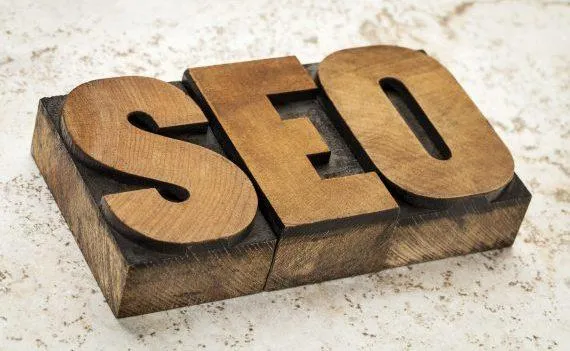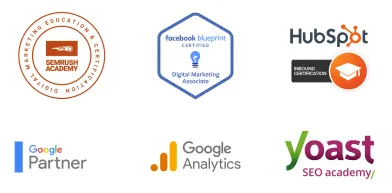TO LEARN IS TO GROW
Learning Center
We do our research and publish our results. Should probably call this the Growing Center.


Where Does SEO Fit with Inbound Marketing?
How content marketing, inbound marketing, and SEO all come together for an effective online marketing strategy
We can all remember the days when all we thought about for marketing our business online was getting noticed by Google through SEO tactics that relied heavily on keyword algorithms and other seller-centric methods for getting our brands noticed. Today though, the way we think about online marketing has shifted to more of a human-perspective, and everyone from Google, content marketers, to inbound marketing teams have made the adjustment to create a web experience that is more user (i.e., buyer) friendly as a result.
SEO is still important when coupled with content marketing
But how does SEO continue to work with inbound marketing today if the strategy of Search Engine Optimization has changed? In short, SEO and content marketing are components of a whole inbound marketing strategy that are used to execute effective online marketing in a way that is more buyer-centric.
Remember: content marketing and inbound marketing are related and connected in the sense that they are both about creating and sharing valuable content that is tailored to your target audience, ultimately with the goal of building an online reputation of authority and trustworthiness.
Now this doesn’t happen overnight of course; while inbound marketing is a proven formula that works for businesses of all types and sizes, it’s a process that takes time, analysis, and dedication to creating quality and relevant content that keeps your users coming back for more.
Optimizing your content with SEO and inbound marketing strategies
Just because the way Google searches through your site has changed doesn’t mean that you shouldn’t be optimizing your content and your website at every opportunity. Inbound marketing services provided by marketing teams like LOJO can give you access to keyword research tools which can help you find the best keywords to optimize for and around in your content and on webpages.
-Research keywords, especially long-tail keywords, based on your target audience, not just rankability and popularity; inbound marketing is about creating content based off the needs/questions/desires of your ideal customers and using SEO techniques to optimize your content is a foundational aspect of this online marketing strategy.
-Areas of your content pieces that you should optimize for, include:
*Title of the content: an appropriately titled piece of content is one that is both consistent with what is actually being talked about in the content, as well as built around long tail key words that your target audience is likely to search for.
*Keywords and phrases used within content: as previously mentioned, researching key words and phrases with inbound marketing tools gives you an informed look at what it is that your potential site visitors and customers are searching for online, thus giving you ideas and themes to build your content around.
*Links: there are two important aspects of SEO as it applies to links on your website; one, remember to use consistency when naming your links (i.e., the keywords need to be the same for every avenue that a piece of content is linked to), and two, the inbound links to your site must be both reputable sites, as well as relevant to the optimized keywords in the content piece)
*Reputation and authority in the industry: And finally, one of the most vital components of a successful inbound marketing strategy that uses content marketing and SEO to the fullest, is to publish and promote your content with frequency and consistency. Simply writing a blog post, creating an eBook, or posting on Twitter is only half of the equation; content marketing relies heavily on how well you can promote your content online so that it is seen/read/consumed by the right people. When you have an Inbound Marketing certified team like LOJO working with you, they can tailor your marketing plan just for you and for your needs!
But this is really just an introduction into the importance of SEO when it comes to fitting into a successful inbound marketing strategy. For more information on this integral aspect of online marketing, feel free to contact one of our LOJO team members for further guidance on this subject.
Written by Cassandra Sohn
Built for Growth. Backed by 25 Years of Trust.
For over two decades, LOJO has been a trusted partner to hundreds of businesses just like yours. Whether working directly with owners, managers, teams, or boards of directors, our goal remains the same: to be a reliable and results-driven asset to your business.
Over the years, we’ve carefully built a team of experts—each selected for their unique skills, strengths, and personalities. Our clients choose LOJO because they know we genuinely care about their success.
And after 25 years of helping businesses grow, we’re more committed than ever.



Built for Growth. Backed by 25 Years of Trust.
For over two decades, LOJO has been a trusted partner to hundreds of businesses just like yours. Whether working directly with owners, managers, teams, or boards of directors, our goal remains the same: to be a reliable and results-driven asset to your business.
Over the years, we’ve carefully built a team of experts—each selected for their unique skills, strengths, and personalities. Our clients choose LOJO because they know we genuinely care about their success.
And after 25 years of helping businesses grow, we’re more committed than ever.




Matthew Rogers, President
iProspect Check
After spending several months reviewing multiple proposals from several different companies we engaged LOJO to develop a new website that represents our company effectively. We worked initially with Stephen Platte who helped create the scope of the project. Stephen was knowledgeable and always followed up with me on time and as promised.
He "closed the deal" for LOJO with his professionalism, service orientation and easy going approach. Once we signed the contract we were introduced to Jay Kelly who would be the creative lead for LOJO. This was the most challenging part of the project for my company, as there was no shortage of ideas from our side. Jay managed the project flawlessly, and once we had all agreed to the design, Jay introduced us to Eric.
Eric Lay is one of the founders of LOJO. Eric took the design we had developed and brought it to life. We delivered content as quickly as he requested it. Eric kept the project on task and we responded by exceeding every deadline for content. In turn, once provided, literally not a day went by that Eric didn't add the content and take the next step. In just a few weeks we launched our new website. Eric is a pleasure to work with.
His positive attitude and consultative approach really enhanced the experience and made a big difference for us in the outcome of our project. We would welcome you to visit our website to take a look at the quality work of LOJO. We are very pleased with LOJO and look forward to working with them in the future as we pursue an aggressive SEO strategy."
After spending several months reviewing multiple proposals from several different companies we engaged LOJO to develop a new website that represents our company effectively. We worked initially with Stephen Platte who helped create the scope of the project. Stephen was knowledgeable and always followed up with me on time and as promised.
He "closed the deal" for LOJO with his professionalism, service orientation and easy going approach. Once we signed the contract we were introduced to Jay Kelly who would be the creative lead for LOJO. This was the most challenging part of the project for my company, as there was no shortage of ideas from our side. Jay managed the project flawlessly, and once we had all agreed to the design, Jay introduced us to Eric.
Eric Lay is one of the founders of LOJO. Eric took the design we had developed and brought it to life. We delivered content as quickly as he requested it. Eric kept the project on task and we responded by exceeding every deadline for content. In turn, once provided, literally not a day went by that Eric didn't add the content and take the next step. In just a few weeks we launched our new website. Eric is a pleasure to work with.
His positive attitude and consultative approach really enhanced the experience and made a big difference for us in the outcome of our project. We would welcome you to visit our website to take a look at the quality work of LOJO. We are very pleased with LOJO and look forward to working with them in the future as we pursue an aggressive SEO strategy."

Matthew Rogers, President
iProspect Check
The team at LOJO were wonderful to work with. They are well organized and very patient as we worked through our marketing strategy and developed a well thought out and clear action plan at a reasonable price. We will definitely be back for our future campaign needs."

Jon Crosby, Founder
Dazil

